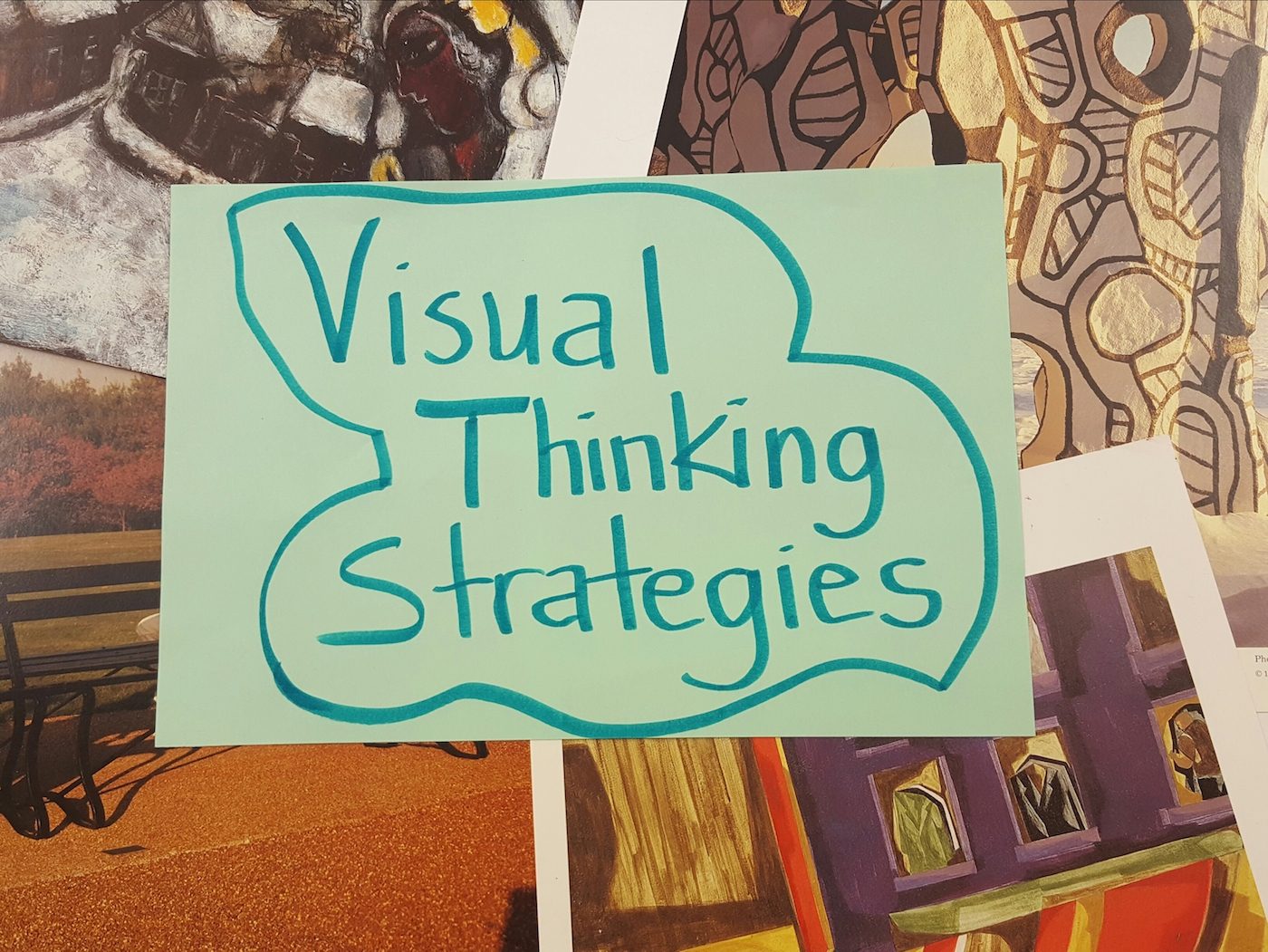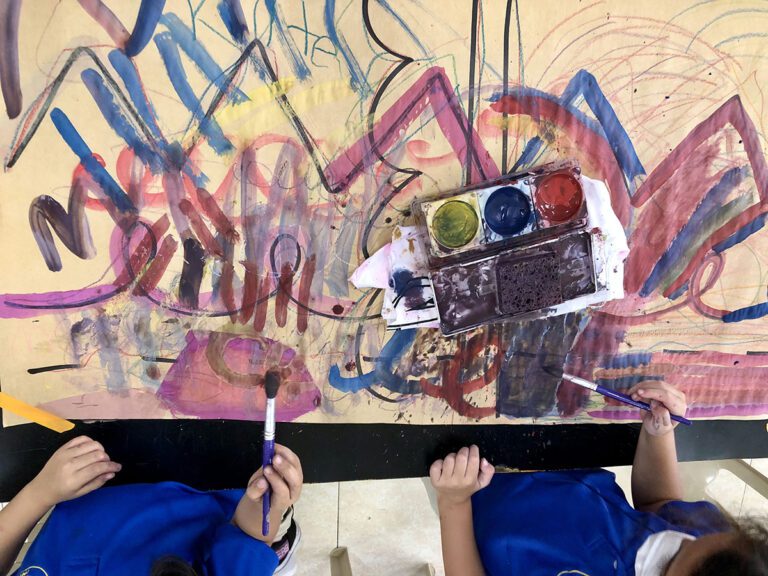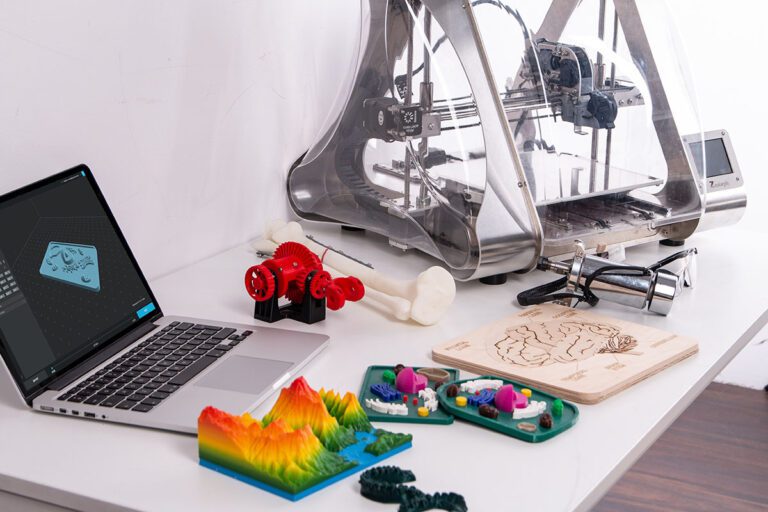Have you ever wondered how you might improve class discussions about art? As art teachers, we know the importance of taking the time to teach students to observe and talk about art. With hundreds of students and short classes, however, this can be a big challenge.
In the past, I felt my class discussions were falling short. I sometimes felt I was rushing my kids to get to the “right” answers so we could move on to the studio experience. I knew I could do better.
In my efforts to improve my practice, I came across Visual Thinking Strategies. It changed the way I worked with my young students to explore artworks.
Visual Thinking Strategies develop critical thinking skills and build confidence when analyzing artworks.
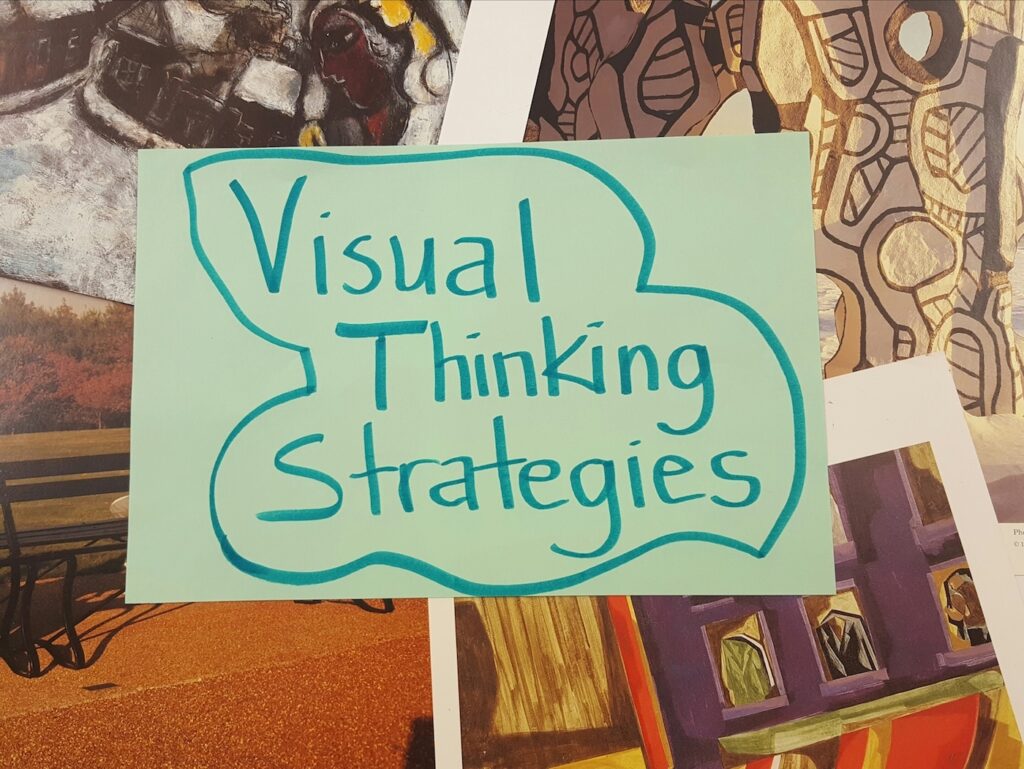
So…what is it, exactly?
Visual Thinking Strategies (VTS for short) is a discussion strategy used to explore artworks through prior knowledge. Students are encouraged to look carefully and use their knowledge of the world to explore imagery that is new to them. By tapping into prior knowledge, students are able to make sense of previously unknown and complex imagery. They ask questions and debate with peers, all while building important critical-thinking skills.
What does it look like?
The easiest way to get started is to ask one simple question. When you are exploring an artwork with your students, ask them, “What is going on here?” That’s it. Then wait, and see what they say. If you are working with young students, they will most likely start raising their hands and sharing right away.
Students should be asked to…
1. Look closely.
Ask them to take their time and just look. I sometimes ask students to observe for a solid minute before we begin our discussion.
2. Talk about what they see.
Allow students to describe the artwork, and build upon the observations of their peers. Really take your time here. Ask, “What else do you see?” several times. This will allow students who may process their thoughts more slowly a chance to participate.
3. Provide evidence for their statements.
I often find myself saying, “Can you tell us what you see that makes you think that?” or, “Can you show us what you see in the picture that tells you that?” Students should be able to back up their ideas.
4. Listen to their peers.
In order for this process to work, it is important that all students feel safe to share. Make sure all perspectives are accepted, and students are respectful when classmates are sharing.
5. Explore different perspectives and understandings.
Students are encouraged to explore the work from a variety of viewpoints. A diversity of interpretations should be the goal.
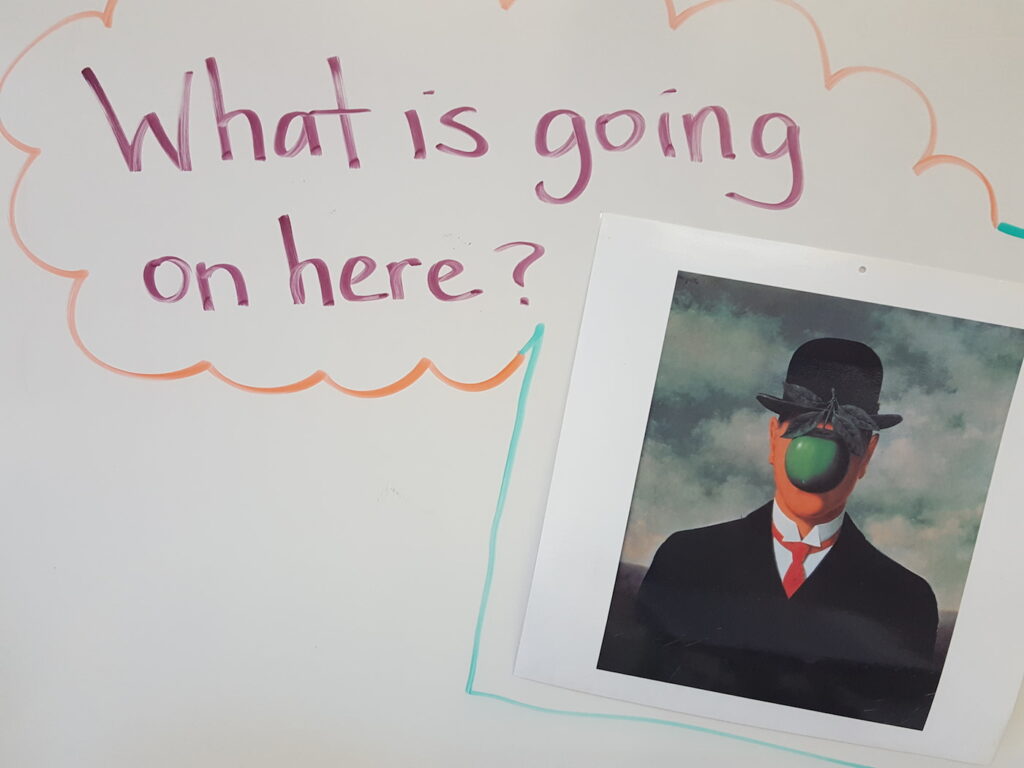
Start with a description of the work.
This will come naturally, as students share their perspectives. Encourage students to be specific. Allow them to point to areas of interest in order to clarify their ideas. For example, in the process of exploring the Mona Lisa, you might have a student state that the “lady looks sad.” Instead of assuming you understand why the student made the comment, ask them to clarify why they think she looks sad.
There are several key elements to this approach.
1. Remain neutral. Do not tell students their interpretation is right or wrong. Allow the exploration to be natural and allow students to share ideas without fear of judgment.
2. Paraphrase student ideas. When a student shares, repeat what they said in simple language. This ensures you understood the student correctly and that the other students understand as well.
3. Make sure to point to the area of the artwork being discussed. This will help all students understand what their classmates see.
4. Connect ideas. If a student comment creates a connection to prior knowledge, bring it into the discussion for students to understand as well. For example “That is a great connection to our study of landscapes from last week! Can anyone else see another connection?”
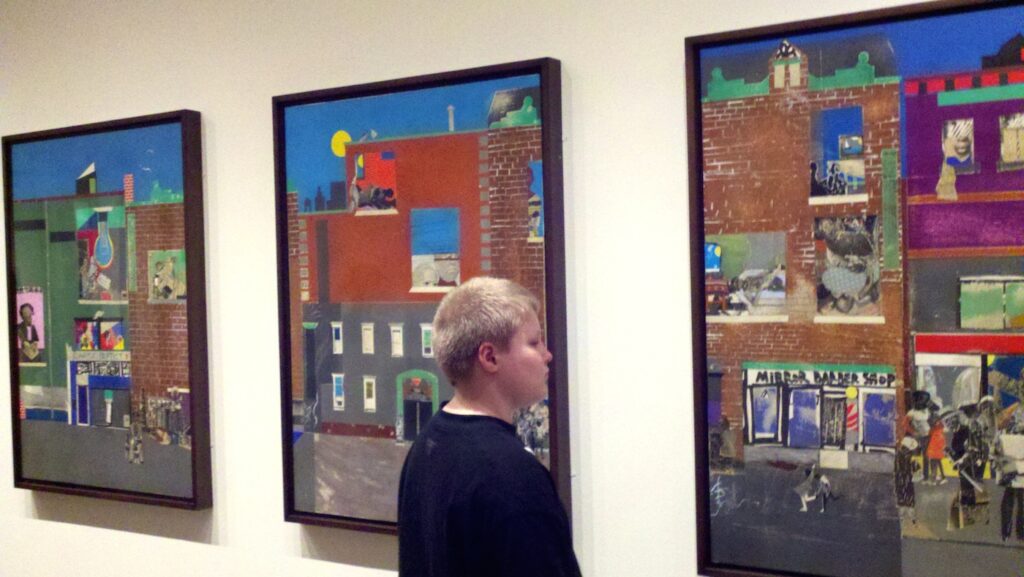
When exploring art in this way, it is important to take your time.
Time is always in short supply in the art room. Yet, in order to do this right, it is vital not to rush. Wait patiently for responses, and allow students to build upon the ideas of their peers.
As the class delves deeper into the work, their curiosity and confidence will grow. As the teacher, your job is to facilitate the discussion, but the students should be the ones really running the show. I find counting to ten and then asking, “What else do you see happening?” helps me to pause and ensure students have the time they need to process their thoughts and get ready to share.
VTS helped me to slow down and enjoy discussing art with my students.
All students love to paint and sculpt. Sometimes we forget the importance of building our students’ observation and communication skills. These skills are important and transfer to other areas of life beyond the art room. Once my students got used to this method, they looked forward to the time we spent talking about art as much as studio time!
Do you use VTS with your students?
What other discussion strategies do you use in your classroom?
Magazine articles and podcasts are opinions of professional education contributors and do not necessarily represent the position of the Art of Education University (AOEU) or its academic offerings. Contributors use terms in the way they are most often talked about in the scope of their educational experiences.
